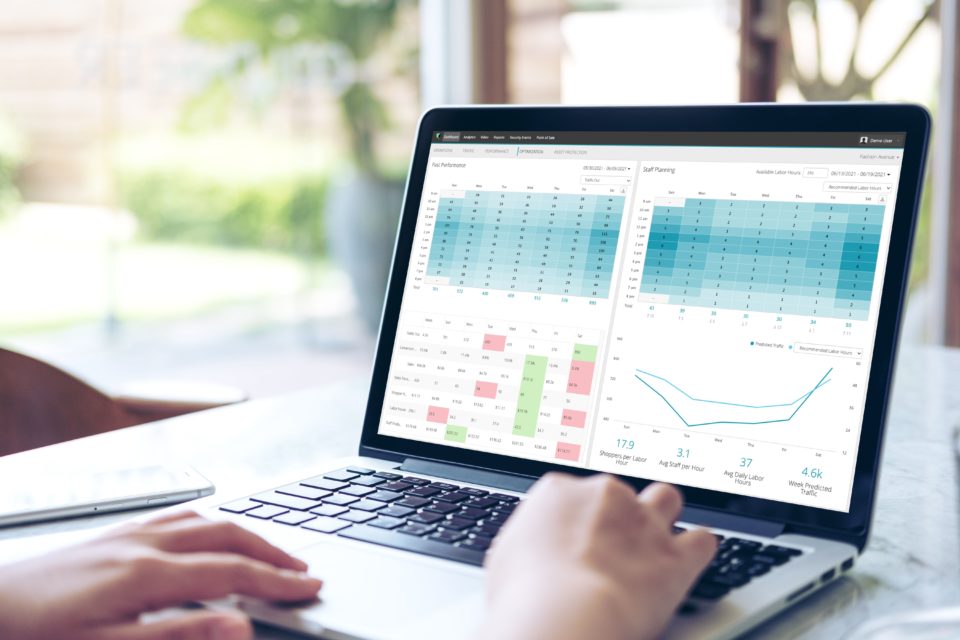Clothes folding robots – crazy concept or a quick win to boost profitability?

Folding clothes. Stocking shelves. How much time is wasted in the average fashion store on necessary, but fruitless, tasks like these? And by the same measure how much are you losing in profitability by tackling them in the same way you always have?
In a survey by Tulip 44% of store associate respondents say they spend too much of their time folding clothes and stocking shelves. These are tasks that take away from time spent engaging with customers. Time that could be spent helping you sell more and build better relationships.
So why not install a robot in your store that could fold clothes for them? If that’s caused you to raise an eyebrow, then we hear you. But is it any crazier than paying staff to keep folding clothes day-in-and-day-out?
What’s interesting is that the clothes folding robot field has more than one key player and they’re both working at different ends of the spectrum. Not only that but this concept has been worked on since 2005 or before in some fashion.
Laundroid is an AI-powered laundry folding robot that began life in Japan in 2005. Created by Seven Dreamers Laboratories Inc., it’s come a long way since then with the current model costing a cool $16,000. However, the company’s aspiration is to reduce that price tag considerably for mass production.
By comparison, the $980 proposed cost for FoldiMate’s laundry folding machine seems positively affordable. Founded in 2012, FoldiMate unveiled the latest prototype at this year’s CES – the same place where it showcased its early concept model in 2017.
With Laundroid you can dump the clothes that you need folding into the bottom drawer, turn the interface and wait. Inside a series of robotic arms fold the clothes and deposit them into the pick-up area for collection. All of the moving parts are hidden behind a sleek mirrored front. Laundroid envisages that the system will be integrated into the walls of our homes in the future which means it doesn’t even take up space on your floor.
What’s particularly interesting is the partner app. Because Laundroid’s robotic arms use cameras and AI to identify the clothing placed in it (so it knows how to fold it) it is capturing a lot of data about it. That data can be accessed through the app which can then be used as a way of tracking and organising your wardrobe.
FoldiMate’s system works in a slightly different manner. The system looks more akin to your average office photocopier. Each item is individually fed into the machine, folded and deposited out the bottom. The company claims it can fold a whole machine load (around 25 items) in under five minutes. The newest version can now deal with different sizes and types of clothes better from clothes for children up to towels, although very small and bulky items are still a challenge.
Reflective of the journey they’ve been on so far, both companies have some way to go before cracking the clothes folding robot challenge. We’re not holding either of them up as something for retailers to rush out and buy now. More work clearly needs to be done. And it’s interesting that they’re both concentrating on the consumer market, rather than businesses right now.
But as a labour-saving device it is an interesting concept. As the tech gets more refined, and the price tag comes down, could the stores of the future have a Laundroid built into them or a FoldiMate in the back?
More than anything though the idea of a robot that can fold clothes forces us to examine the parts of operating a store that don’t offer a lot of value, or require a significant input of time and effort, and look at ways to improve them.
As tech gets better there are places where it can take some of the burden and free up staff. Rather than paying someone to fold clothes, you can pay them to support and engage with customers. And that’s where you can really drive profitability. Maybe that clothes folding robot isn’t so crazy after all?
Want further inspiration? Wrap your eyes around these wow tech initiatives for a glimpse at what could be.
Want to quickly and easily connect with the players kick-starting trends and inventing the future of retail? Find out how you can transform your team’s thinking using Insider Trends’ little black book here.



